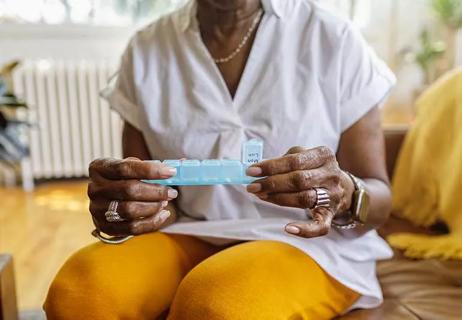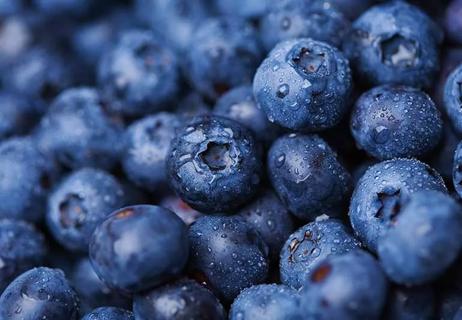From leafy greens to heart-healthy oils, the selection is abundant

Vitamin K is a powerhouse in your body. It helps build strong bones. It helps regulate blood clotting. And it helps keep your blood pressure in check.
Advertisement
Cleveland Clinic is a non-profit academic medical center. Advertising on our site helps support our mission. We do not endorse non-Cleveland Clinic products or services. Policy
Most of us can get plenty of vitamin K through the foods we eat. This is a good thing, as at least some research suggests vitamin K supplements may not be very effective.
“Getting vitamins from your food is always better than relying on supplements,” says registered dietitian Julia Zumpano, RD, LD.
“Vitamin K is made from short-chain molecules, so it passes through your body quickly. That means that if you take a vitamin K supplement, it doesn’t spend much time in your body and doesn’t give you the full benefits you’d get from eating foods high in vitamin K.”
We talked with Zumpano about why vitamin K is important in your diet and the best foods to fill up on vitamin K.
Vitamin K is a category of vitamins. There are two variations: vitamin K1 and vitamin K2. Both do similar things for your body.
“Vitamin K1 has long been known for its benefits throughout your body,” Zumpano says. “But it’s now becoming clearer that vitamin K2 may be just as important in those processes.”
More research is being done to understand whether vitamin K1 or vitamin K2 is more effective or efficient in any particular role in your body. But it’s clear that K vitamins have several important benefits:
Advertisement
Vitamin K1 is mostly associated with plant-based foods. Vitamin K2 is more common in animal products, dairy and fermented foods.
So, while vitamin K1 foods tend to come with additional health benefits, like other vitamins and minerals, vitamin K2 foods aren’t always the healthiest choices.
The U.S. Department of Agriculture’s (USDA’s) Dietary Guidelines for Americans suggests these recommended daily allowances of vitamin K for adults 18 and older:
The USDA doesn’t have specific recommendations for how much of your intake of vitamin K should come from vitamin K1 versus vitamin K2. The guidelines are based on a total amount of vitamin K from all sources.
Zumpano shares these 21 foods that are rich in vitamin K and are all-around good additions as part of your healthy eating plan:
| Food | Vitamin K content (in micrograms) | Serving size |
|---|---|---|
| Nattō (fermented soy)* | 850 mcg | 3 ounces |
| Collard greens | 530 mcg | ½ cup |
| Boiled turnip greens | 426 mcg | ½ cup |
| Raw spinach | 72.5 mcg | ½ cup |
| Raw kale | 57 mcg | ½ cup |
| Cooked broccoli | 110 mcg | ½ cup |
| Dry roasted cashews | 80 mcg | ½ cup |
| Roasted soybeans | 43 mcg | 1/2 cup |
| Soybean oil | 25 mcg | 1 tablespoon |
| Prepared frozen edamame | 21 mcg | 1/2 cup |
| Canned pumpkin | 20 mcg | 1/2 cup |
| Carrot juice | 19 mcg | 1/2 cup |
| Raw okra | 16 mcg | 1/2 cup |
| Dried pine nuts | 15 mcg | 1 ounce |
| Blueberries | 14 mcg | 1/2 cup |
| Pomegranate juice | 13 mcg | 1/2 cup |
| Roasted chicken breast* | 13 mcg | 3 ounces |
| Grapes | 11 mcg | 1/2 cup |
| Canola oil | 10 mcg | 1 tablespoon |
| Carrot | 8 mcg | 1 medium |
| Olive oil | 8 mcg | 1 tablespoon |
| Food | ||
| Nattō (fermented soy)* | ||
| Vitamin K content (in micrograms) | ||
| 850 mcg | ||
| Serving size | ||
| 3 ounces | ||
| Collard greens | ||
| Vitamin K content (in micrograms) | ||
| 530 mcg | ||
| Serving size | ||
| ½ cup | ||
| Boiled turnip greens | ||
| Vitamin K content (in micrograms) | ||
| 426 mcg | ||
| Serving size | ||
| ½ cup | ||
| Raw spinach | ||
| Vitamin K content (in micrograms) | ||
| 72.5 mcg | ||
| Serving size | ||
| ½ cup | ||
| Raw kale | ||
| Vitamin K content (in micrograms) | ||
| 57 mcg | ||
| Serving size | ||
| ½ cup | ||
| Cooked broccoli | ||
| Vitamin K content (in micrograms) | ||
| 110 mcg | ||
| Serving size | ||
| ½ cup | ||
| Dry roasted cashews | ||
| Vitamin K content (in micrograms) | ||
| 80 mcg | ||
| Serving size | ||
| ½ cup | ||
| Roasted soybeans | ||
| Vitamin K content (in micrograms) | ||
| 43 mcg | ||
| Serving size | ||
| 1/2 cup | ||
| Soybean oil | ||
| Vitamin K content (in micrograms) | ||
| 25 mcg | ||
| Serving size | ||
| 1 tablespoon | ||
| Prepared frozen edamame | ||
| Vitamin K content (in micrograms) | ||
| 21 mcg | ||
| Serving size | ||
| 1/2 cup | ||
| Canned pumpkin | ||
| Vitamin K content (in micrograms) | ||
| 20 mcg | ||
| Serving size | ||
| 1/2 cup | ||
| Carrot juice | ||
| Vitamin K content (in micrograms) | ||
| 19 mcg | ||
| Serving size | ||
| 1/2 cup | ||
| Raw okra | ||
| Vitamin K content (in micrograms) | ||
| 16 mcg | ||
| Serving size | ||
| 1/2 cup | ||
| Dried pine nuts | ||
| Vitamin K content (in micrograms) | ||
| 15 mcg | ||
| Serving size | ||
| 1 ounce | ||
| Blueberries | ||
| Vitamin K content (in micrograms) | ||
| 14 mcg | ||
| Serving size | ||
| 1/2 cup | ||
| Pomegranate juice | ||
| Vitamin K content (in micrograms) | ||
| 13 mcg | ||
| Serving size | ||
| 1/2 cup | ||
| Roasted chicken breast* | ||
| Vitamin K content (in micrograms) | ||
| 13 mcg | ||
| Serving size | ||
| 3 ounces | ||
| Grapes | ||
| Vitamin K content (in micrograms) | ||
| 11 mcg | ||
| Serving size | ||
| 1/2 cup | ||
| Canola oil | ||
| Vitamin K content (in micrograms) | ||
| 10 mcg | ||
| Serving size | ||
| 1 tablespoon | ||
| Carrot | ||
| Vitamin K content (in micrograms) | ||
| 8 mcg | ||
| Serving size | ||
| 1 medium | ||
| Olive oil | ||
| Vitamin K content (in micrograms) | ||
| 8 mcg | ||
| Serving size | ||
| 1 tablespoon |
*Foods highest in vitamin K2. All others are listed based on their vitamin K1 content.
To help your body fully absorb vitamin K, Zumpano suggests eating a bit of fat along with vitamin K-rich foods.
“Vitamin K is a fat-soluble vitamin,” she explains. “It dissolves in fat to be stored in your body, rather than leaving it immediately as waste. So, eating a bit of healthy fat with or before eating foods rich with vitamin K will help your body reap the most benefits.”
Foods high in unsaturated fats are healthy choices to eat just before vitamin K-rich foods. Try pairing your vitamin K sources of healthy fats with:
For example, you could toss a spinach and kale salad (vitamin K) with olive oil dressing and avocado (fats). Or mix fresh blueberries (vitamin K) in your plain yogurt (fat). Or munch on a charcuterie board of dry roasted cashews (vitamin K) and olives (fat).
You get the idea.
And you don’t have to eat a lot of fat to get the vitamin-absorbing effects. Just a bit will do. The goal should be to fill up more on vitamin-rich foods than on fats, even if they’re healthier fats.
Pro tip: This same fat-plus-vitamins approach is best for other fat-soluble vitamins as well. That includes vitamin A, vitamin D and vitamin E.
Note: Some vitamins, like vitamin C and B vitamins, are water-soluble. They use water — not fat — to be absorbed by your body. Drink a glass of water when taking those vitamins or eating foods rich in them.
If you take a blood thinning medication, such as warfarin (Coumadin®), vitamin K can raise your risk for blood clots. That doesn’t necessarily mean you need to avoid all vitamin K-rich foods. You just should be careful not to go overboard or to drastically increase your intake. And you certainly should not take a vitamin K supplement without talking with your healthcare provider.
Advertisement
For everyone else, a diet rich in vitamin K is healthy for your bones, blood and heart.
“Soy, leafy greens and fruits that are rich in vitamin K are good for so many of your body’s systems,” Zumpano emphasizes. “They’re foods that should be a staple in just most people’s heart-healthy diets.”
Advertisement
Learn more about our editorial process.
Advertisement

Calcium, vitamin D and magnesium are essential — but you should supplement under doctor’s orders

Both micronutrients support body functions, but there are key differences, like what foods have them and what jobs they do

It’s always best to talk to a healthcare provider before taking any supplements to avoid toxicity

Vitamin K2 foods aren’t the usual suspects

Vitamin K2 is gaining recognition for its effects on blood clotting, heart health and bone health

It helps your bones stay strong and your blood clot, but it may also do so much more

These delicate green sprouts can give you an extra dose of vitamin K and other nutrients — but they’re not safe for everyone

Edamame, lentils and chicken breast are good sources of protein

Start having sex about 72 hours before ovulation, then at least every other day during your fertile window

Attachment theory suggests that your earliest relationships shape connections throughout your life

It isn’t a recognized mental health disorder, but research shows that problematic social media use can negatively affect your mental health, self-esteem and sleep